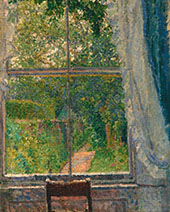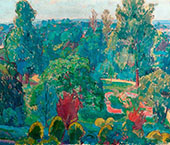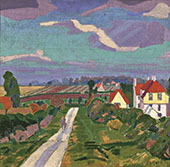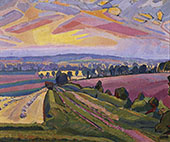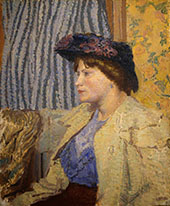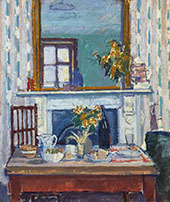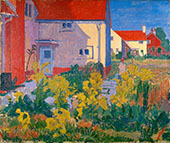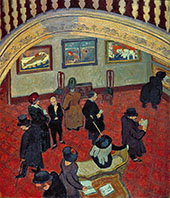Camden Town Oil Painting Reproductions
Find Camden Town oil painting replicas by Camden Town artists
The Camden Town Group: Post-Impressionist Paintings
The Camden Town Group was a set of artists working in the early 20th century. Inspired by Post-Impressionism paintings, they often met at Walter Sickert’s studio. Based in the Camden Town area of London, UK, this meeting place gave the group its name.
Active between 1911 and 1913, this group of sixteen men created wonderfully colorful landscape paintings, portraiture, and city scenes. After 1913, several members continued their association as the “London Group.”
You can learn more about this intriguing group of artists known as the Camden Town members and their iconic paintings of London.
What started the Camden Town Group?
Frank Rutter, the influential British art critic, curator, and activist, launched the “Allied Artists Association” in 1908. This organization brought together many artists who later formed the Camden Town Group.
This group, known as AAA, separated itself from the influential Royal Academy of Arts. Based in London’s Piccadilly, the Royal Academy dictated the look and feel of British art. They favored Classical and Academic painters during this period, leaving little room for artistic experimentation.
Taking inspiration from the French Salon des Independants, the AAA instigated independent exhibitions. Many Camden Town Group artists worked with the AAA, which served as a productive platform for meetings and discussion.
Who was part of the Camden Town Group?
There were sixteen members of the Camden Town Group. These artists met every week, arranging exhibitions and discussing their artistic progress. They originally referred to themselves as the Fitzroy Street Group.
Its male members included Walter Sickert, Spencer Frederick Gore, and Harold Gilman. Lucien Pissarro, the son of the famed French Impressionist artist Camille Pissarro, was also a prominent member. He often worked alongside Wyndham Lewis, who co-founded the Vorticist movement. Other members included Walter Bayes, Robert Bevan, J. B. Manson, and Augustus John. Australian-born Henry Lamb, Charles Ginner, and the deaf artist John Doman completed the group.
The Camden Town Group specifically excluded women. Despite this, some female artists became involved with the movement at a distance. These women included Marjorie Sherlock, famed for her paintings and etchings, and the Americans Ethel Sands and Anna Hope Hudson. The group entirely excluded other female artists, such as Laura Sylvia Gosse.
Describing a typical meeting, the writer Louis Ferguson spoke of the “appealing smell of tea and pigment” in Sickert’s studio. He recounted glorious afternoons of pictures and talks where the group discussed their work. Spencer Gore usually ensured that each artist received their equal share of critical discussion.
Why is it called the Camden Town Group?
The Camden Town Group got its name from a now fashionable district of north London where Walter Sickert lived during the 1890s.
Walter Sickert’s famous nude paintings and estranged couples exemplify his unique contribution to the group. Indeed, paintings such as Ennui (translating as Boredom) represent strained relationships, silence, and entrapment. Sickert’s detailing, for instance, birds in bell jars, heavy furniture, and vases, all demonstrate themes of entrapment and stasis.
Together, the group decided to focus on the everyday lives of ordinary working people. Their paintings were small and inexpensive to avoid the “spectacle” of upper-class art. As a result, Camden Town artists left a unique legacy tracing the changing face of early nineteenth-century London. Camden Town oil paintings include people drinking in pubs, attending casinos and music halls, and domestic interiors and gardens.
The Camden Town Group steered away from social and political judgment. Instead, focusing on honest and respectful observations of their subjects. As shown by Sickert, their artworks often had a psychological focus.
Was Harold Gilman a Camden Town Group artist?
Harold Gilman was a Camden Town group artist. His oil paintings were similar to Walter Sickert’s in subject matter and style. Indeed, Gilman also produced a series of famous nude paintings. Oil paintings include Nude on a Bed and Nude Standing by a Bed). Additionally, he created several notable portrait paintings. Mrs. Mounter at the Breakfast Table is best known today.
Harold Gilman’s expert depiction of skin tones, featuring a host of blue, green, orange, yellow, and pink hues, is particularly notable. Like Walter Sickert, he painted domestic scenes with characters alone and isolated in their environments. The peculiar mundanity of family life shines through works such as The Shopping List and The Artist’s Mother.
What inspired the Camden Town Group?
Vincent Van Gogh and Paul Gauguin’s Post Impressionism paintings heavily influenced the Camden Town Group. Spencer Gore even depicted Paul Gauguin's paintings in a 1911 oil painting, Gauguins and Connoisseurs. Van Gogh’s colorful landscape paintings inspired works such as Gore’s The Icknield Way and The Fig Tree. Gore’s vivid color, free brushstrokes, and large planes of flat paint are evident in these paintings.
As well as reflecting Post-Impressionism in Britain, the group’s paintings of London provide fascinating insights into everyday life. Artists such as Spencer Gore often focused on portraiture and domestic scenes. His series focusing on Mornington Crescent, near the British Library and Regent’s Park, is particularly intriguing. Images such as Interior 31 Mornington Crescent give glimpses into private homes. They feature postcards, books, quiet figures, and carefully observed furnishings. Other paintings like Mornington Crescent show the London city skyline and iconic red buses.
Why was the Camden Town Group important?
While the Camden Town Group held just three exhibitions at the Carfax Gallery in London, they represent a distinctive period of British art. They show modern urban life and a changing city, reflecting broader social and cultural changes during the Edwardian period.
The Camden Town Group helped organize Cubism and Post Impressionism art exhibitions in the UK. This cross-continental discussion paved the way for exciting British art developments after World War I.
Reflecting their artistic importance, Tate Britain in London held a major retrospective of the group in 2008. The exhibition excluded several artists but did include Wyndham Lewis, Augustus John, and Henry Lamb. Referencing the decision, Art Historian Wendy Baron stated “too little individual character” to make their inclusion worthwhile.
The Camden Town Group: Replica Oil Paintings for Sale
If you enjoy Harold Gilman’s famous nude paintings and Spencer Gore’s colorful wall art, explore our collection of fine art reproductions.
Buy museum quality oil paintings of London and colorful landscape paintings for your home or office walls.
Cannot Find What You Are Looking For?
Reproduction Gallery Information
Customer Service
(Send Us A Message)
Tel: (503) 937 2010
Fax: (503) 937 2011

